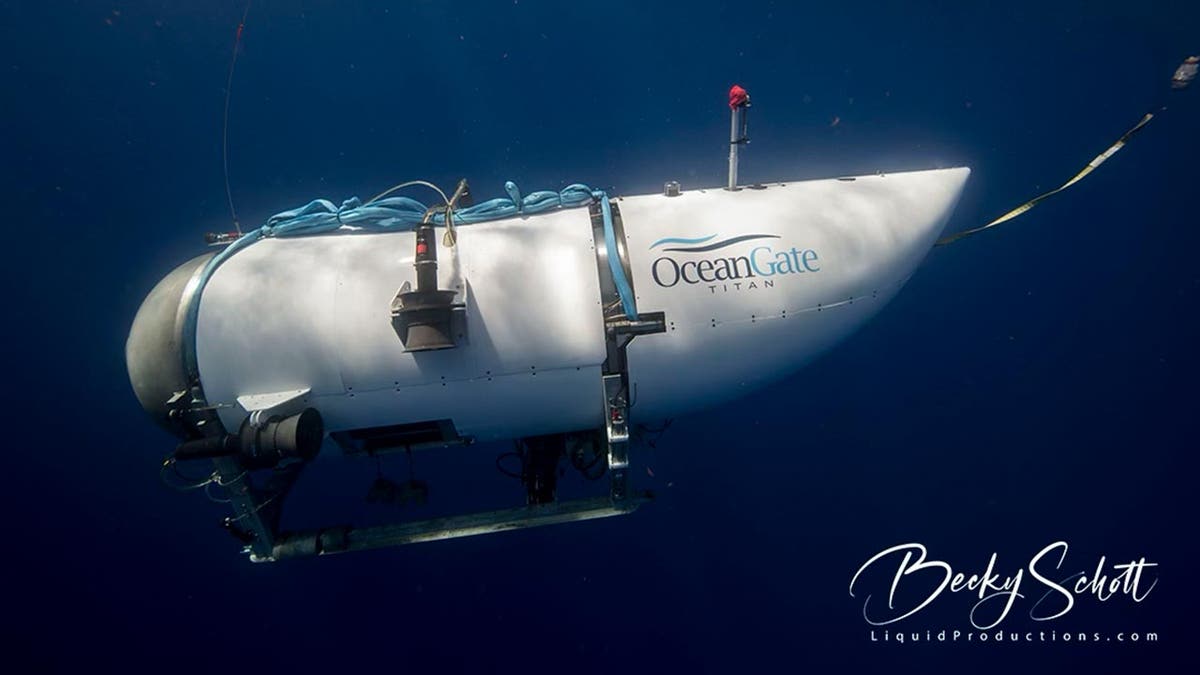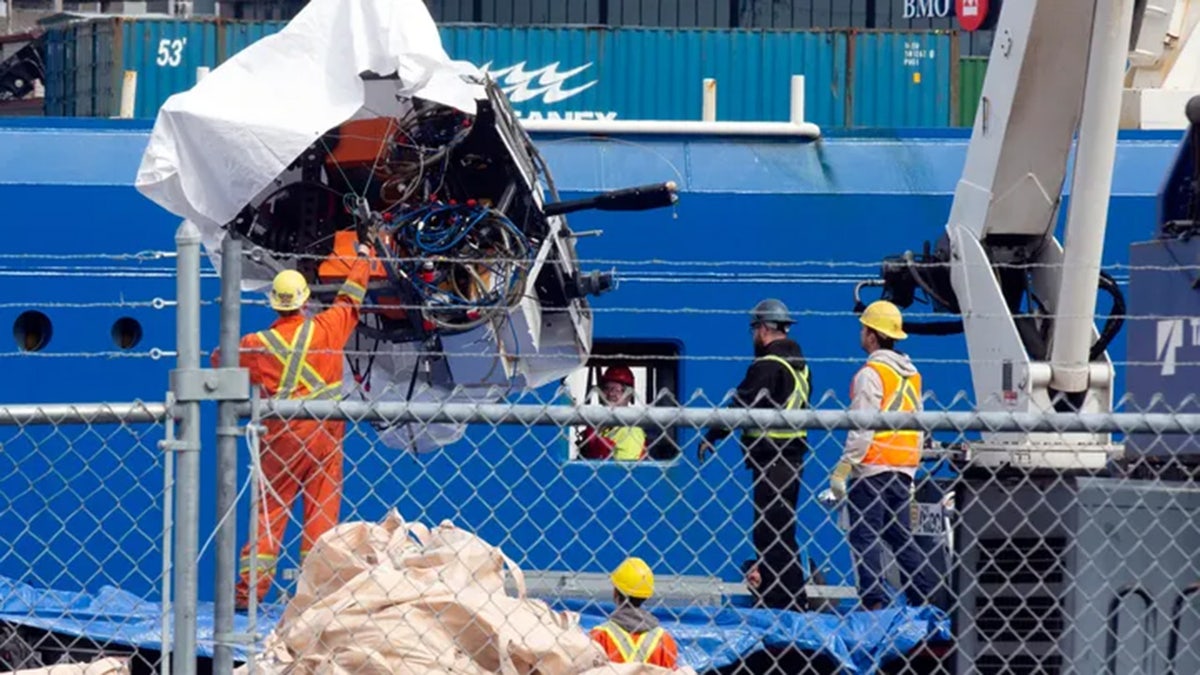NEWYou can now listen to Fox News articles!
A scathing new report into the Titan submersible disaster that killed five people has found the vessel was damaged during earlier dives and built through a flawed engineering process that failed to meet safety standards — conditions that ultimately led to its fatal implosion.
The report released by the National Transportation Safety Board (NTSB) on Wednesday also found that OceanGate, the vessel's operator, did not adequately test Titan or know its actual strength and durability.
The doomed vessel imploded near the Titanic wreck in the North Atlantic Ocean in 2023, resulting in the instantaneous death of all five occupants.
Unlike earlier probes, the NTSB report focuses on how Titan's carbon-fiber hull physically failed and adds new technical safety recommendations.
EXPLOSIVE NEW REPORT BLAMES OCEANGATE AND ITS CEO FOR 'PREVENTABLE' TITAN SUB DISASTER

General view of the Titan submersible in the Bahamas in May of 2018. The Titan imploded during a mission to view the Titanic on Monday, June 19, 2023. (Becky Kagan Schott)
"We found that the Titan pressure vessel likely sustained damage after it surfaced at the end of dive 80 in the form of one or more delaminations, which weakened the pressure vessel," the report states. In plain terms, delamination means that the layers of material started to come apart inside the carbon fiber hull.
Those delaminations deteriorated between dive 80 and dive 88, its final dive, resulting in a local buckling failure that led to the implosion. In fact, it found that after dive 82, the Titan sustained additional damage of unknown origin that further deteriorated and weakened the pressure vessel.
The new report stated that OceanGate's real-time monitoring data analysis of Titan's pressure was flawed, so the company was unaware that the vessel was damaged and needed to be immediately removed from service. The sensors meant to detect hull strain didn’t trigger proper alarms and engineers misread or dismissed the data, the report found.
The vessel’s flawed engineering and carbon fiber design were outlined as the primary cause for its ultimate demise.
"We determined that the probable cause of the hull failure and implosion… was OceanGate’s inadequate engineering process, which failed to establish the actual strength and durability of the Titan pressure vessel and resulted in the company operating a carbon fiber composite vessel that sustained delamination damage… resulting in a damaged internal structure that subsequently led to a local buckling failure of the pressure vessel," the report states.

A labeled image from the NTSB report shows the wreckage of OceanGate’s Titan submersible on the ocean floor, including its aft dome and rail sections, during recovery operations on June 22, 2023. (NTSB)
VIDEO SHOWS OCEANGATE CEO'S WIFE REACT AFTER SOUND NOW THOUGHT TO HAVE BEEN TITAN SUB IMPLOSION
The report also said the wreckage of the Titan likely would have been found sooner had OceanGate followed standard guidance for emergency response, and that would have saved "time and resources even though a rescue was not possible in this case."
The NTSB report follows on from a 335-page report by the U.S. Coast Guard (USCG) released in August which found that the tragedy was preventable and also the result of a flawed experimental design and ignored safety warnings.
READ THE FULL REPORT – APP USERS, CLICK HERE:
That report blamed OceanGate, with particular culpability placed on OceanGate CEO Stockton Rush, who perished in the disaster. It also focused on OceanGate's culture, leadership, certification gaps and suppression of safety warnings.
The new NTSB adds new, sharper specifics that the Coast Guard report didn’t spell out, like how the Titan’s carbon-fiber pressure hull physically failed.
For instance, the Coast Guard only noted that earlier dives showed "cracking sounds" and "signs of fatigue," but didn’t tie them to a numbered dive sequence or a confirmed delamination chain.

Debris from the Titan submersible, recovered from the ocean floor near the wreck of the Titanic, is unloaded from the ship Horizon Arctic at the Canadian Coast Guard pier on June 28, 2023. (Paul Daly/The Canadian Press via AP)
CLICK HERE TO GET THE FOX NEWS APP
The NTSB report called for a Coast Guard-led panel of deep-submersible experts to study current pressure-vessel operations and share their findings with industry, alongside new U.S. regulations for pressure vessels for human occupancy.
It also recommends that the Coast Guard implement regulations for the vehicles that are informed by that study. The report states that current regulations for small passenger vessels "enabled OceanGate's operation of the Titan in an unsafe manner."
The report also called on the Coast Guard to "disseminate findings of the study to the industry," which has grown in recent years as privately-financed exploration has grown.
The Associated Press contributed to this report.
Michael Dorgan is a writer for Fox News Digital and Fox Business.
You can send tips to [email protected] and follow him on Twitter @M_Dorgan.

 10 hours ago
3
10 hours ago
3

















































